Harbin Old city & my first adventures with a vintage Helios 44-2 lens
This visit to Harbin coincided with me finally being able to try out my Helios 44-2 lens, which I acquired over 8 months earlier. More about this a bit further down.
I spend over a week in Harbin, together with my daughter and wife. We came to see the magnificent ice snow & festival there. And to chill a bit from the tropical heat of Bali. Temperatures that never rise above minus 15 degrees Celsius (and which can go as low as – 30) are indeed perfect to ‘chill’.
You can see my personal family & holiday pictures from this trip here.
To see the snow and ice festival and to chill a bit 2,3 days would be enough. We, however, decided to stay a week. So, I was looking something else to do while in Harbin. And my good friend and fellow photographer Win, suggested we visit Harbin’s old town.
Sure, why not. And I decided to try out my Russian vintage lens – the Helios 44-2 there.
Let’s see some photographs first (all done with the Helios 44-2):

Most of Harbin’s old city has already been abandoned

Those houses are left to decay

and it is that decay that gives them a certain ‘charm’

Everything is in disrepair
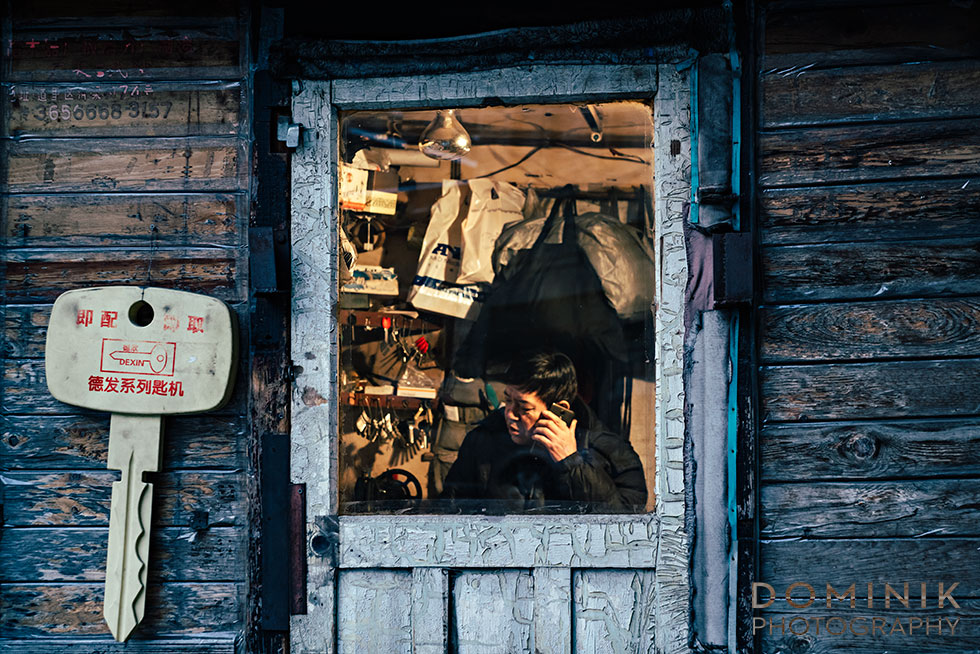
But there are still traces of ‘life’…
The following is more a for-photographers story. If you are not into photography you may want to skip this chapter and move on to a bit background about Harbin’s old city – or simply enjoy the photographs.
The Helios 44-2 lens — the start of a love affair
My love affair with vintage lenses started when I saw on the 500px website a photo that caught my attention due to its very interesting and captivating bokeh.
(Intended rant: I wanted to show you the photograph on 500px where I saw the Helios 44-2 for the first time. I knew it was a photo I for sure liked on 500px. But those ‘lovely people’ from 500px want to force me to upgrade to a paid account to see photos I liked in the past. Shame on them… It confirms my decision abandon their platform long ago…)
Anyway, after encountering this lovely photo that caught my attention I contacted the photographer and asked her what lens she was using. She replied to me that it was a Helios 44-2 lens.
I had to have a Helios 44-2 vintage lens.
I was very pleasantly surprised when I learned that this lens can be had for as little as 30 – 35 USD.
Can a 30 USD lens be worth something?
Having worked as a professional photographer in Bali for over 15 years with ‘conventional glass’ that often costs as much as 1000 USD and more I was skeptical what a lens costing ‘peanuts’ could do.
My photographer-brain was conditioned that for ‘good glass’ one has to pay ‘good money’.
But I thought even if it would be complete crap it was worth trying out. And soon after some ‘googling’ I quickly found out that this lens is actually pretty popular and widely available.
And, boy was I in for a surprise regarding the quality of this lens and the pictures it can produce.
Some more photos, if I may:


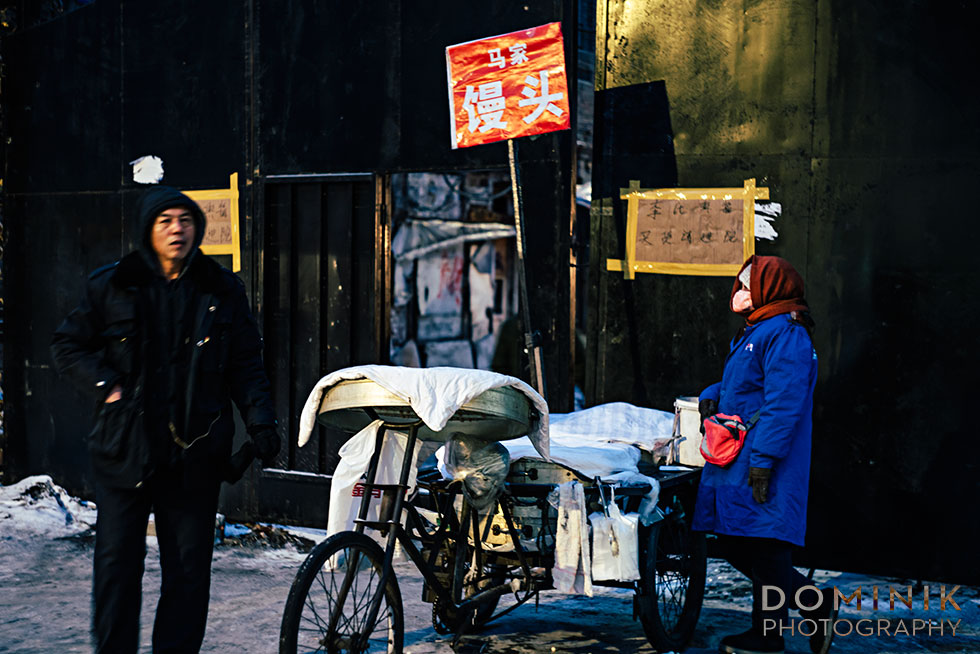
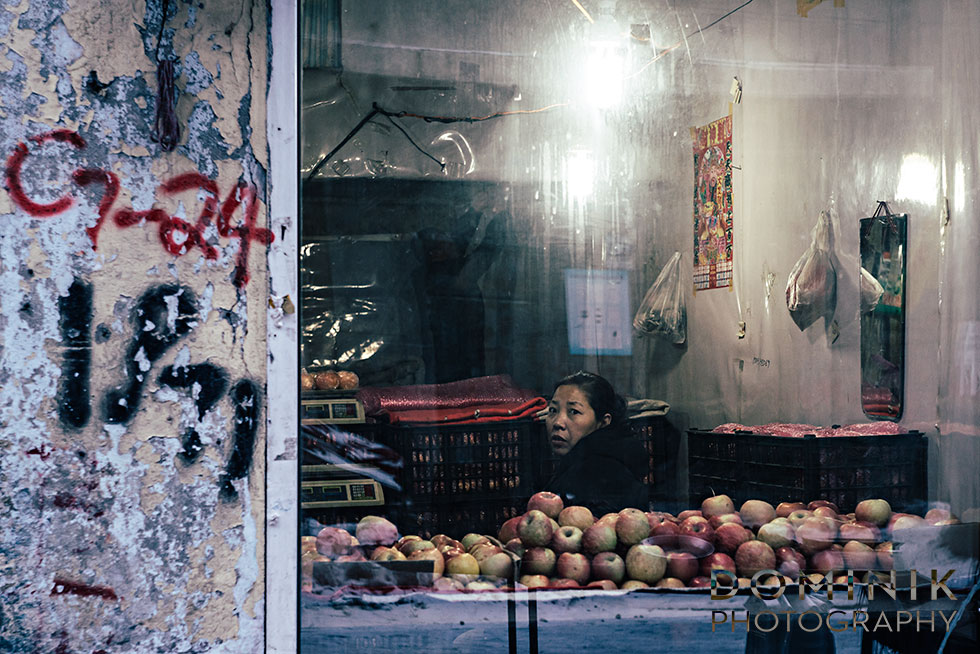


Why did it take 8 long months for me to try out this lens for the first time ?
I found a website of Russian business that only sold Helios 44-2 and I ordered it. First time for me to buy photographic gear from halfway across the world.
A nightmare ensued!! I was prepared to wait a few weeks until the lens from Russia would arrive here in Bali – Indonesia. But weeks turned into months and the lens did not show up. After 4 months or so I contacted the seller and asked for a refund. Without hesitation they refunded me.
Then a few weeks later the lens arrived in Bali. Of course, I sent refunded payment back to the seller. But the nightmare was not to end yet. They messed up my order and put in a wrong adapter. Even though my order was to include a SONY NEX adapter they sent me some other adapter.
I am a persistent person. So did not want to give up yet. I asked the seller to resend me the correct adapter. This time I had it shipped to friends back in Europe, whom I was about to visit. Coz sending the adapter to Bali I feared it could take again months and months. But by sheer coincidence the adapter arrived 2 days after I had left Europe again for Bali.
Was I ever to try out this lens that was meanwhile collecting dust ?
Finally, I ended up with the correct adapter, during this trip to Harbin – China. An M42 to Sony NEX adapter. Those puppies can be had for less than 10 USD and are easily available on ebay and from other sources.
So from the day, I ordered my Helios 44-2 until I could finally put it to use 8-9 months had passed. And it was during a trip to Harbin North-East China when I could for the first time put this lens through the paces. I was VERY PLEASANTLY surprised.
Some more photographs ?
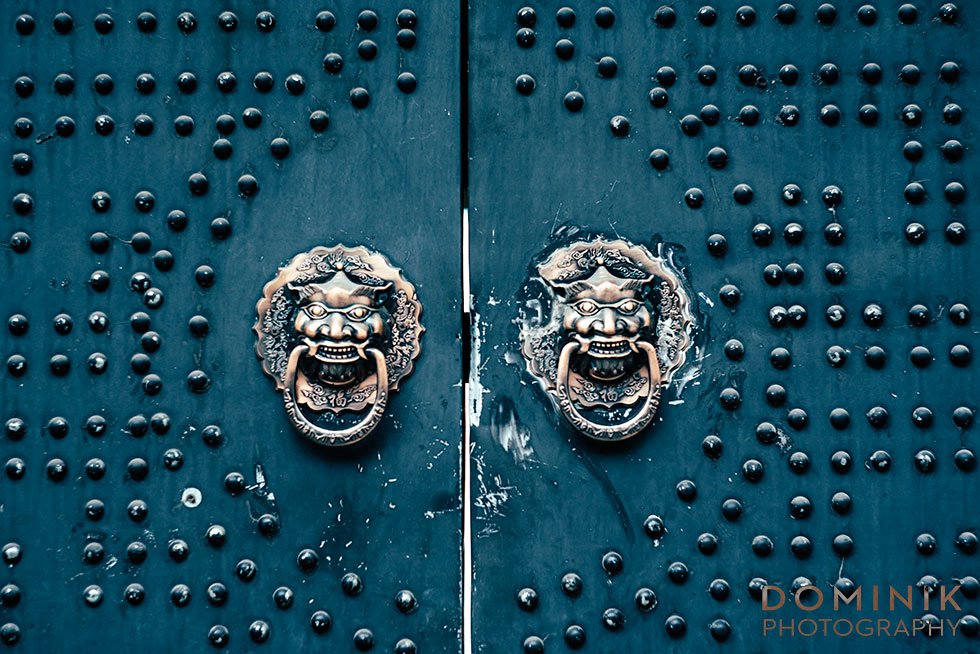
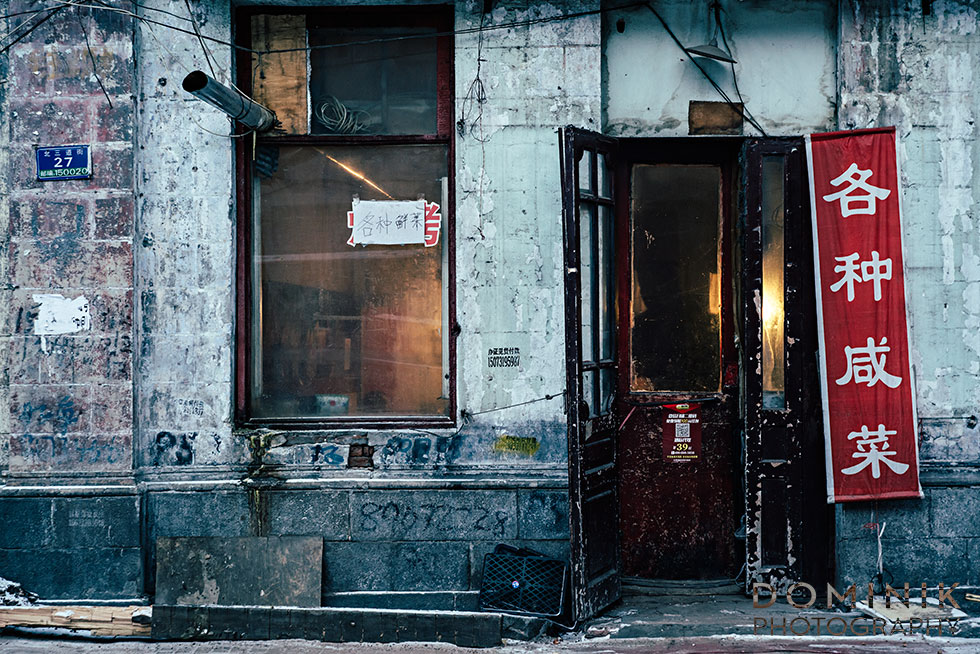



The Helios 44-2 – an ideal travel companion ?
Most folks who buy a Helios 44-2 do this because of the ‘legendary’ bokeh this lens produces. And that was also my impetus at first.
However, I quickly found out that this lens is not just good for odd-looking bokeh. The Helios 44-2 is also a very nice piece of gear, which due to its ultra-small size and light-weight is also a great lens for traveling.
Enough gear talk ! For those who want to see how this lens can become a remarkable super-creative ultra-weird photographic tool please see the following article: (Very) Swirly Bokeh with modified Helios 44-2 lens .
Harbin – old city
I won’t go deep into describing Harbin. Suffice to say that due to its very northern location and relative proximity to Russia it is not your average Chinese metropolis.
Part of its uniqueness is its old city. Not as old as to qualify as ancient, but interesting nevertheless. It has a very unique architecture strongly influenced by Russian and even Jewish style elements. Most of Harbin’s remaining old city is in a very dilapidated state and falling apart… In fact some parts of it are actually closed off. However, there were still a few residents living there and even some shops and other economic activity.
For me, it was exactly that state of decay that was very appealing. And interesting photograph.
And the good news is that at least parts of Harbin’s old city are being refurbished and re-vitalized and repurposed.
So I leave you with some more photographs of the part that has already been refurbished and repopulated with restaurants, cafes.
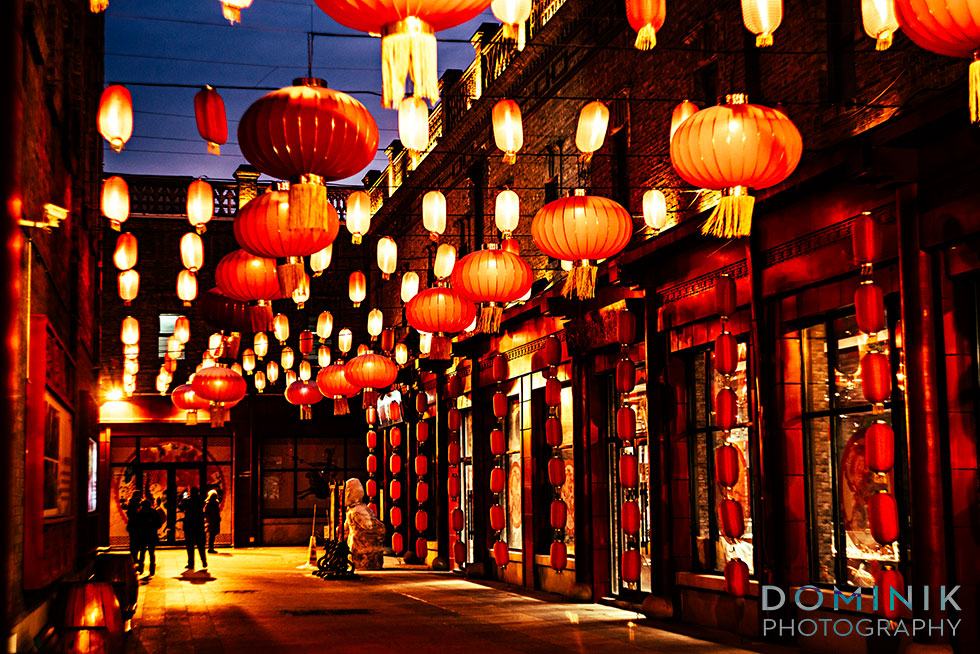
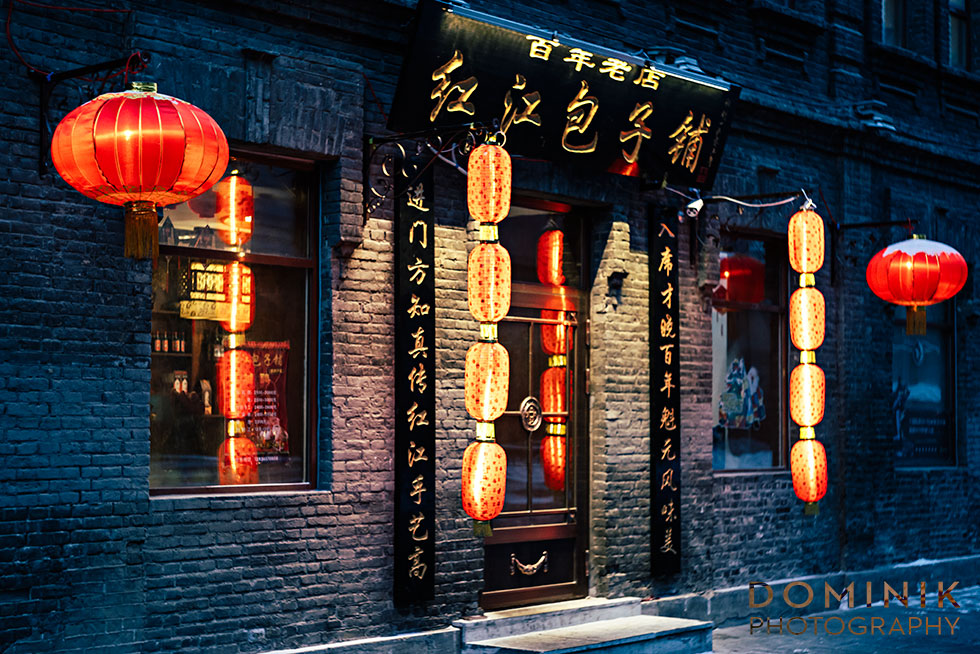
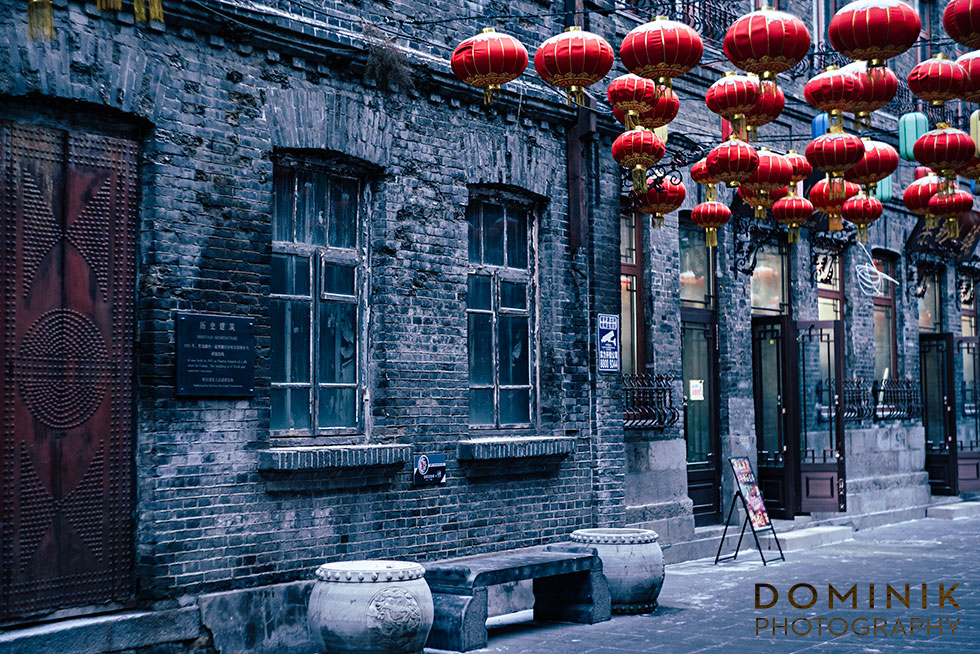
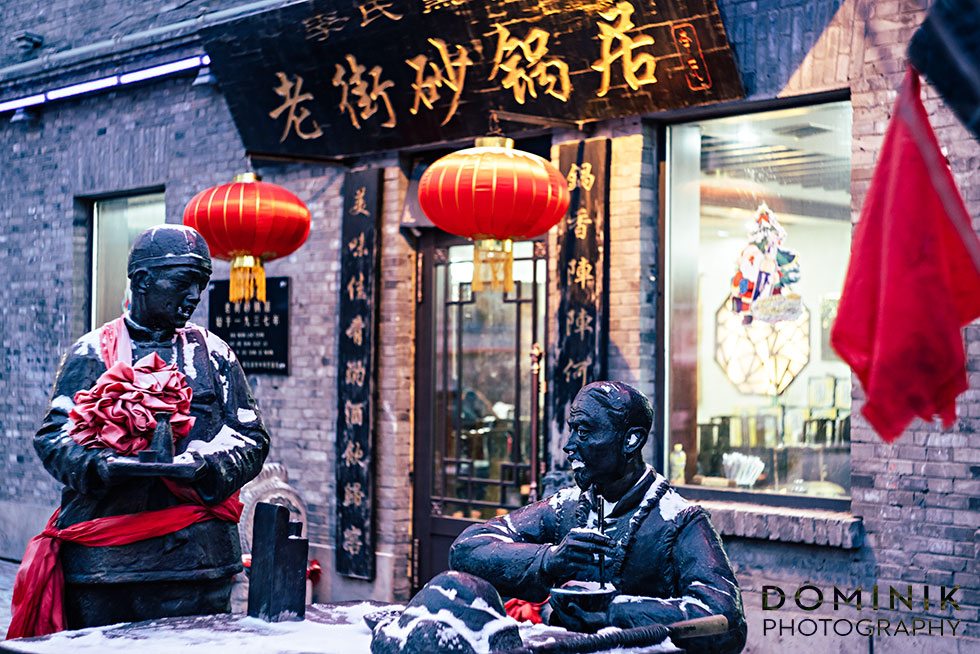
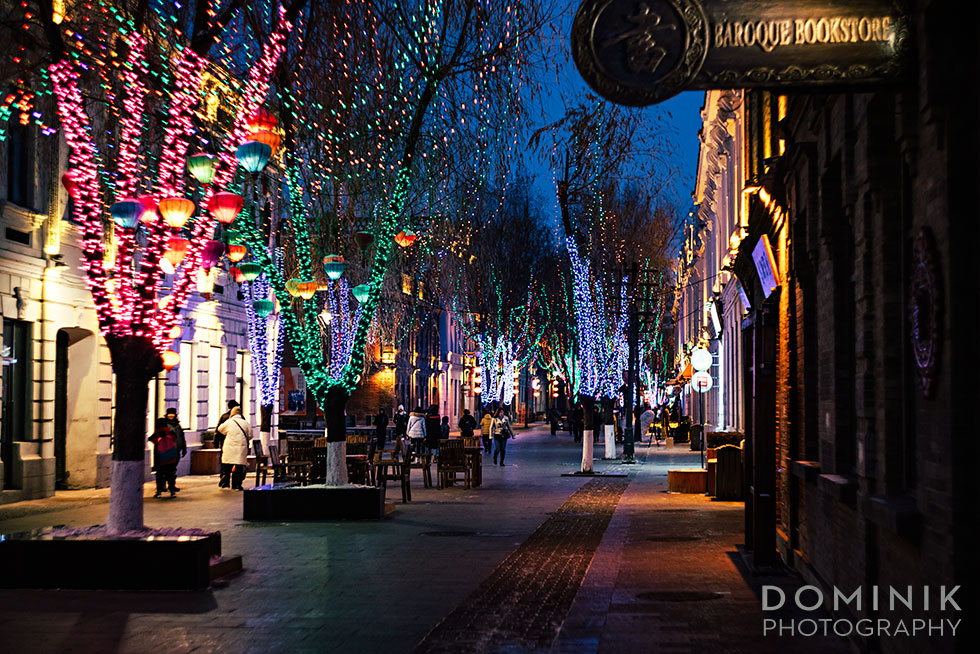

I hope you have enjoyed the pictures from Harbin’s old city. If you want to see more Harbin photos and in particular photos of the legendary snow & ice festival please follow this link.
As always, I would love to hear from you – regardless what you have to say…
Truly’ – DOMINIK
FOLLOW ME ON







Dear Dominik, Thanks very much for your interesting (really) photos of Harbin’s Old City. Like you I am attracted to old, worn, and decrept facades, but for whatever reason I mainly just look at them, preferring to photograph — street photographer style — people. While I like all your Harbin “architecture” work, the photos of yours I like best are of people ///From 1982 until the early ’90’s I lived in Korea off and on, accumulating a total of thirteen years of residence. I supported myself through ESL teaching. In 2008, a book of my black and white photos was published by Thinking Tree Press, a non-vanity publisher in Seoul. It is long out of print now, but you may still be able to see its cover in a distorted Amazon book ad. Ttitle: “An American in Korea, Two Decades of Photography by Drayton S. Hamilton.” A picture from inside is also available, if you can find it, perhaps at the Kyoto Journal site, with a eulogy for my deceased Korean wife written by an old friend, Bob Fouser. ///From fall, 2010 to summer, 2016, I again took up my life of ESL teacher and, time permitting, photographer, this time in Henan, China. I’m not sure whether I came to a stopping place with that project or not, but do wish I had been able to take more “industrial” stuff — especially old such stuff. On a trip to a northern area of China, I found a very old (Stalin era) metal-stamping factory with weigh-a-ton all manual Russian machines. The A-H manager absolutely refused to let me do any photography in it, sheer sadism being his motive as far as I could see.. Harbin must have factories like this. Do you know? Have any connections there I might contact? Thanks for reading this far. (Like many Southerners, I’m on the loquacious side, and can”t help it.) Yours Truly, DRAYTON ps If you would like to see some more of my Korea photos, say the word, and I’ll try to prevail upon my son, who unlike me is not a computer Luddite, to send some to you. Thanks again for your photos and for your patience.
Dear Drayton,
Greetings from wonderful Bali.
Thank you so much for seeing my article and for responding. It means a lot to me.
To your points: While I like all your Harbin “architecture” work, the photos of yours I like best are of people
Because as a wedding photographer for over 10 years I rather avoid people photography when I travel. Tough I get great pleasure out of photographing folks stealthy with a 500mm or longer lens. Example:https://dominik-photography.com/street-portraiture/
>> An American in Korea, Two Decades of Photography by Drayton S. Hamilton <<< Yes, I could find the cover of the book on several websites. But that is it. It is a shame that your work is not available online for everyone to enjoy. Especially with a view to the fact that with every passing day it becomes more and more relevant as a historical document. >> Harbin must have factories like this. Do you know? <<< I don't. But it is fair to assume because Harbin was and is an industrial powerhouse of Dongbei (North-Eastern China). However, I suppose that if the old Communist China is of interest to you there may be better places. Most notably Beijing. Because after all that is where the communist power was concentrated and from there the propaganda machines operated. Henan, China. I'm not sure whether I came to a stopping place with that project or not My take on this: whatever you set out to do and however far you got, it proly is worth sharing with the world. Because having it just in a shoebox or on a hard drive in a computer is maybe not what it was made for. If you would like to see some more of my Korea photos, say the word, and I'll try to prevail upon my son, who unlike me is not a computer Luddite, to send some to you. Here I pronounce it loud and clear: YES PLEASE. 'Ludditism' as an excuse for not sharing what you got does not do it for me as an excuse anymore. You are most obviously capable of writing an email or leaving a comment on my website. Sharing your work over Google photos, for instance, is intellectually less challenging than writing an email... The easiest / best way, that I would recommend for you to share is on MEDIUM.COM . Because as someone who taught the English language to the world I am certain that you will also have qualities as a writer. And I never believed in the phrase: A picture is worth a thousand words...On the contrary, it is my conviction that a photo is worth jackshit without the comment of the photographer or someone else. Here is an example of how things could look like if you were to take up the initiative and publish your work on Medium.com: https://medium.com/@dominik.vanyi/kolkata-a-feast-for-the-senses-and-the-lenses-c42d17568099 – and by the way, if you loved my Harbin pix then this one will tickle you even more.
Once again thank you very much for taking the time to write to me.
Cheers – DOMINIK
Dear Dominik, Thanks very much for your interesting (really) photos of Harbin’s Old City. Like you I am attracted to old, worn, and decrept facades, but for whatever reason I mainly just look at them, preferring to photograph — street photographer style — people. While I like all your Harbin “architecture” work, the photos of yours I like best are of people ///From 1982 until the early ’90’s I lived in Korea off and on, accumulating a total of thirteen years of residence. I supported myself through ESL teaching. In 2008, a book of my black and white photos was published by Thinking Tree Press, a non-vanity publisher in Seoul. It is long out of print now, but you may still be able to see its cover in a distorted Amazon book ad. Ttitle: “An American in Korea, Two Decades of Photography by Drayton S. Hamilton.” A picture from inside is also available, if you can find it, perhaps at the Kyoto Journal site, with a eulogy for my deceased Korean wife written by an old friend, Bob Fouser. ///From fall, 2010 to summer, 2016, I again took up my life of ESL teacher and, time permitting, photographer, this time in Henan, China. I’m not sure whether I came to a stopping place with that project or not, but do wish I had been able to take more “industrial” stuff — especially old such stuff. On a trip to a northern area of China, I found a very old (Stalin era) metal-stamping factory with weigh-a-ton all manual Russian machines. The A-H manager absolutely refused to let me do any photography in it, sheer sadism being his motive as far as I could see.. Harbin must have factories like this. Do you know? Have any connections there I might contact? Thanks for reading this far. (Like many Southerners, I’m on the loquacious side, and can”t help it.) Yours Truly, DRAYTON p.s. If you would like to see some more of my Korea photos, say the word, and I’ll try to prevail upon my son, who unlike me is not a computer Luddite, to send some to you. Thanks again for your photos and for your patience. p.p.s. Looks like I’ve inadvertently sent you multiple copies of this message. I don’t know what “back” means, and now wonder if I’ve sent youanything at all.